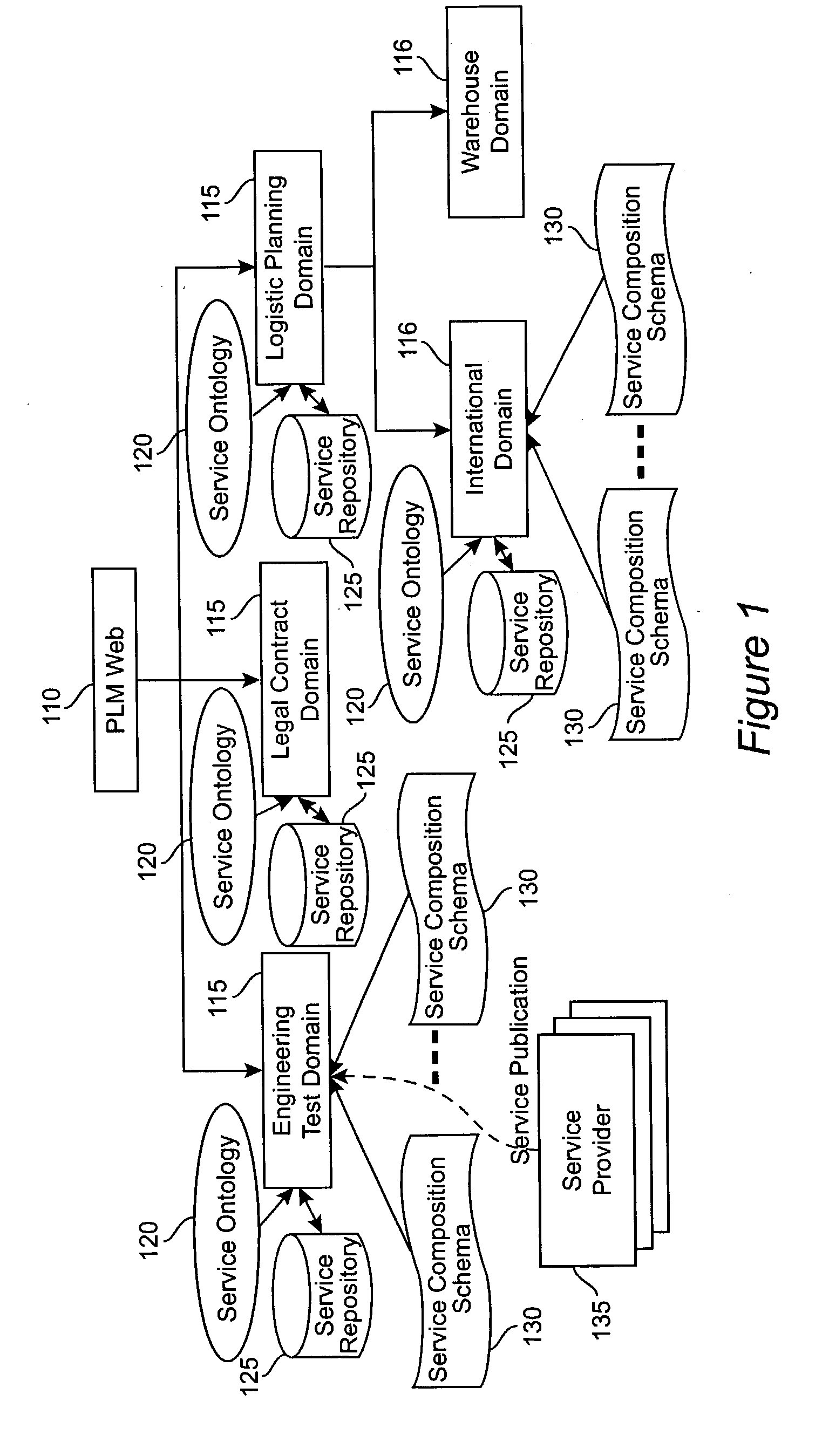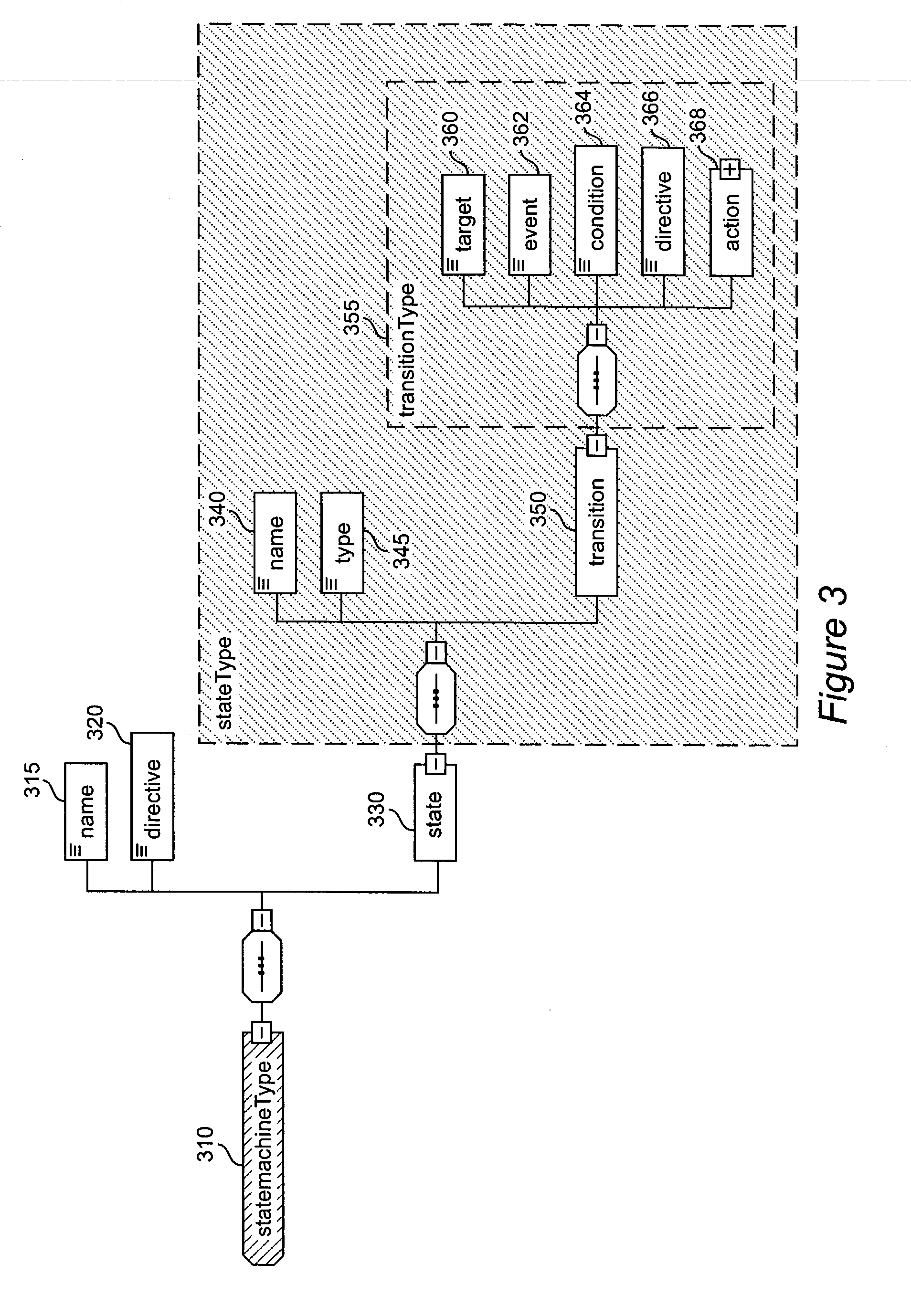Method and apparatus for product lifecycle management in a distributed environment enabled by dynamic business process composition and execution by rule inference
- Summary
- Abstract
- Description
- Claims
- Application Information
AI Technical Summary
Benefits of technology
Problems solved by technology
Method used
Image
Examples
embodiment
4.0 Implementation and Embodiment
[0292] This section describes a logical system view of the PLM-web architecture. This implementation illustrates the key ideas behind the PLM-web concept presented above. This section identifies critical components and their relationships to one another and suggests a preferred embodiment. In its most rudimentary form, PLM system architecture consists of three basic components, identified in FIG. 18 as a PLM-flow Manager 1810, Service Providers 1820 and PLM-web 1830.
[0293] The PLM-flow Manager 1810 dynamically composes, selects, executes and monitors all aspects of ad-hoc workflow in accordance with the end user's intentions and directives. The PLM-flow manager 1810 interacts with service providers 1820 following the service composition schema published by the provider 1820 in a service repository 1840. In addition to supporting machine interfaces, the PLM-flow manger provides a graphic end user interface that presents to the end users 1850 system st...
PUM
 Login to View More
Login to View More Abstract
Description
Claims
Application Information
 Login to View More
Login to View More - R&D
- Intellectual Property
- Life Sciences
- Materials
- Tech Scout
- Unparalleled Data Quality
- Higher Quality Content
- 60% Fewer Hallucinations
Browse by: Latest US Patents, China's latest patents, Technical Efficacy Thesaurus, Application Domain, Technology Topic, Popular Technical Reports.
© 2025 PatSnap. All rights reserved.Legal|Privacy policy|Modern Slavery Act Transparency Statement|Sitemap|About US| Contact US: help@patsnap.com



